
07 Oct Family Tree Newsletter- October 8, 2023
Contents
- 1 SITTING IN A TRAFFIC JAM ON PRESTON ROAD IN DALLAS, AND THOUGHT ABOUT MY FAMILY TREE AND MY GG GRANDFATHER’S BEING ON THE ROAD 152 YEARS EARLIER
- 2 FAMILY TREE- DID HARRY TRUMAN SAY IT FIRST?
- 3 CONTINUING WITH THE FAMILY TREE OF THE SIGNERS OF THE DECLARATION OR THE CONSTITUTION
- 4 DANCESTORS HELPS A DAUGHTER HONOR HER FATHER’S FAMILY TREE WORK!
- 5 A DISTANT RELATIVE IN MY FAMILY TREE HAD THE SHORTEST TENURE AS THE SPEAKER OF THE HOUSE OF REPRESENTATIVES
- 6 WHAT ABOUT YOUR FAMILY TREE?
 SITTING IN A TRAFFIC JAM ON PRESTON ROAD IN DALLAS, AND THOUGHT ABOUT MY FAMILY TREE AND MY GG GRANDFATHER’S BEING ON THE ROAD 152 YEARS EARLIER
SITTING IN A TRAFFIC JAM ON PRESTON ROAD IN DALLAS, AND THOUGHT ABOUT MY FAMILY TREE AND MY GG GRANDFATHER’S BEING ON THE ROAD 152 YEARS EARLIER
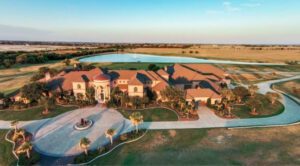 From his diary, that I referenced in the last newsletter:
From his diary, that I referenced in the last newsletter:
January 19, 1871- Leave the Brazos opposite Kimball for Kansas, camp on Nolin 9 miles.
January 20, 1871- Camp on Buffalo one mile east of Cleburne, 11 miles from our old camp.
January 21, 1871- Pass through the cross timbers & camp on the black land one mile from Alvarado on Cedar Mill Road, a distance of 12 miles.
January 22, 1871- Pass over a gently rolling prairie; the soil was very sticky & mud, very deep—camp on a small creek 12 miles from our old camp.
January 23, 1871- Pass Cedar Hill and camp on a creek 4 miles north, travel 12 miles.
January 24, 1871- Pass Dallas and camp one mile east. It rains all night. Travel 13 miles.
January 25, 1871- Drive 7 miles east to Ad Haughts. Fine country, black soil, mud deep.
January 26, 1871- Lay by Mr. Haughts, 15 head of cattle runoff.
January 27, 1871- Still lay by. Frank Wareman finds the cattle.
January 28, 1871- Gather our cattle and start in the afternoon for Kansas—travel 4 miles and camp. The roads are very bad.
January 29, 1871- Travel 7 miles and camp near a cotton gin.
January 30, 1871- We drove about one mile and upset the wagon with Mary, Olive, Matilda, and Daniel inside, but no one was seriously hurt. Set up wagon and, reloaded, and traveled 4 miles more.
January 31, 1871- Cold winds from the north. Layed by.
February 1, 1871- Started west 5 miles to the Dallas and Preston Road 12 miles north of Dallas.
February 2, 1871- Layed by, very wet. Corn is $1 per bushel.
February 3, 1871- Start north for Sherman. Pass through and camp 3 miles north of Lebanon—a distance of 15 miles.
February 4, 1871- Travel about 15 miles and camp on the prairie.
February 5, 1871- We travel 15 miles and camp on the head of a branch some 8 miles southwest of Sherman on Preston Road.
February 6, 1871- Pass Sherman and camp at old Curks 2 miles north.
February 7, 1871- Camp on the hill 1 ½ miles south of Colbert’s Ferry . 8 miles.
February 8, 1871- Cross our wagon on the ferry and, with more difficulty, swim our loose cattle at Colbert’s and now finds us in the Chickasaw country, and the Indians tax us 12 ½ cents per head on loose stock. 7 miles traveled.
February 9, 1871- Pass Carriage Point and camp near a store in the Choctaw country. The Choctaw demanded 50 cents per head on loose stock but finally concluded that the law was not intended for us, and we were permitted to pass free of charge—a distance of 15 miles.
Preston Trail became part of the first official Texas military road in 1839. In the autumn of that year, future Confederate General Albert Sidney Johnston (who was at that time the Secretary of War for the Republic of Texas) sent soldiers under the command of Colonel William Gordon Cooke to build a road from the Brazos River to the Red River and establish frontier forts to protect settlers from Indian attacks.
In 1840, 23-year-old William Gilwater Preston was the commanding officer of a unit of Republic of Texas soldiers stationed at the newly founded Fort Preston near Preston, Texas, on the Red River. These soldiers built a road from Preston to Austin, Texas. The road was surveyed in 1840.
The Preston Trail followed an ancient Indian trail extending from Mexico through central Texas to what is now St. Louis, Missouri, and even on to Ohio, where the Shawnee Indians lived. Parts of this old trail became known as the Chihuahua Trail. Extending northwards from Cedar Springs to the Red River, the Old Preston Road crossed very few streams. It followed a geographic spine of topography that still exists today where rainwater draining to the west flows into the Elm Fork of the Trinity River, and rainwater draining to the east flows into the East Fork of the Trinity River until the rivers merge downstream of Dallas.
When we first moved here, we knew Preston Road as where Deion Sanders lived.
 FAMILY TREE- DID HARRY TRUMAN SAY IT FIRST?
FAMILY TREE- DID HARRY TRUMAN SAY IT FIRST?
After a recent visit to the Truman Presidential Library, I wondered where Truman’s famous phrase “the buck stops here” came from that Truman used and had on his desk.
I went and searched for its first appearance, and it seemed to appear in 1942 newspapers on various military officers’ desks, as shown here.
Since Harry said, “The Buck Stops Here”, politicians have used the phrase consistently in both parties. Even though it seems like many think it translates to “your buck gets spent here”.
 CONTINUING WITH THE FAMILY TREE OF THE SIGNERS OF THE DECLARATION OR THE CONSTITUTION
CONTINUING WITH THE FAMILY TREE OF THE SIGNERS OF THE DECLARATION OR THE CONSTITUTION
Philip Livingston (1686 – 1749) (above left) was an American merchant, slave trader, and politician in colonial New York. The son of Robert Livingston, the Elder and elder brother of Robert of Clermont, Philip was the second lord of Livingston Manor. He had one son, Philip, who signed the Declaration of Independence, and another son, William, who signed the U.S. Constitution.
Philip Livingston (1716 – 1778) (above middle) was an American merchant, politician, and slave trader from New York City. He represented New York at the October 1774 First Continental Congress, where he favored imposing economic sanctions upon Great Britain to pressure the British Parliament to repeal the Intolerable Acts. Livingston was also a delegate to the Second Continental Congress from 1775 to 1778 and signed the Declaration of Independence, thus becoming one of the United States’ Founding Fathers.
Philip Livingston died suddenly while attending the sixth session of Congress in York, Pennsylvania, and is buried in the Prospect Hill Cemetery there. Livingston was a Presbyterian and a Mason. When Livingston died, his estate was insufficient to meet his debts, and his executors renounced the administration of the estate. On February 25, 1785, the New York Legislature passed an act entitled An Act for vesting the Estate of Philip Livingston, late of the City of New York, Esquire, deceased, in Trustees for the Payment of his Debts, and other Purposes therein mentioned, which named as trustees his son and heir, Philip Livingston, Isaac Roosevelt, and Robert C. Livingston, his nephew who was a son of Robert Livingston, 3rd Lord of the Manor. The trustees were responsible for administering Livingston’s “property, pay all debts, and discharge the pecuniary legacies.” After his son died in 1788, Rev. John Henry Livingston, Thomas Jones, his sons-in-law, Henry Brockholst Livingston (see below), his nephew, and Alexander Hamilton were appointed the executors of his will.
William Livingston (1723 – 1790) (above right), was an American politician and lawyer who served as the first governor of New Jersey (1776–1790) during the American Revolutionary War. He signed the Continental Association and the United States Constitution as a New Jersey representative in the Continental Congress. He is considered one of the Founding Fathers of the United States and a Founding Father of New Jersey.
In 2021, we wrote about William’s son, Henry Brockholst Livingston, a contemporary and relative of Alexander Hamilton who fought a duel with my wife’s many times Great Uncle James Jones and prevailed. The story is worth reading again:
https://gem.godaddy.com/s/d8cf231
 DANCESTORS HELPS A DAUGHTER HONOR HER FATHER’S FAMILY TREE WORK!
DANCESTORS HELPS A DAUGHTER HONOR HER FATHER’S FAMILY TREE WORK!
ASHLAND It was no surprise to Allison Champer Swim to learn her father, the late Stan Champer (above), had written volumes about genealogy. It was his passion from the time he was 13.
But to her surprise, her father had written more than 20 poems, too.
Champer, formerly the copy desk chief for The Daily Independent, died in 2021 after a short illness. When Swim, a nurse practitioner who lives in New Braunfels, Texas, sorted out his belongings, she found his writing.
“I found his writing kind of stuffed away in a cabinet after Dad passed,” she said of the original copies of poems he wrote in the 1960s. “The paper was falling apart, but I was able to make copies of it. He signed all of his works and dated them.”
Swim said she read one of the poems at her father’s memorial service, and it spoke of family and how fleeting life is.
“He wrote it in the early 1960s and it was impressive to me he was so poignant at such a young age about this we feel at an older age,” she said, noting the poetry subject varied depending on his feelings at the time of his writing.
But genealogy was Champer’s love, she said. A graduate of Ohio University with degrees in English and history, Champer traced his lineage to the 1700s and had written nine books based on the various branches of his family. Swim said they were in good order and it wasn’t difficult to get them ready for print. One of the shorter volumes contains his original poetry in the preface.
She said she worked with Dancestors Genealogy of Dallas to prepare and publish the manuscripts.
“I reached out to a bunch of libraries in the Ashland area and asked if they’d be interested in a donation,” she said, noting much of Champer’s work is linked to the area. “All the libraries wanted the donations and now they are available for public viewing.
“My hope was that book could help a lot of families in the area that might have a family line attached to us.”
Swim said she was comfortable working with words, as both her parents were journalists.
Working on getting the books published stirred memories for Swim.
“It was an emotional journey more than anything,” she said. “I wanted to honor Dad’s work because he spent his lifetime putting all these things together, and I didn’t want them to end up in a closet somewhere.”
She recalled visiting cemeteries and libraries with her father to do research.
“He said he didn’t trust the internet, that anybody can put anything on the internet,” she said.
The books can be seen at 12 libraries across the region, including Carter County, Lawrence County (Kentucky and Ohio), Scioto County, Lexington, Greenup and many others. Swim said no one is making a profit on the books; anyone interested in a book can contact her at .
“To know how much love and pride he put in that, I wanted to honor him by making sure everything he did would be out there long after you and I are gone,” Swim said.
 A DISTANT RELATIVE IN MY FAMILY TREE HAD THE SHORTEST TENURE AS THE SPEAKER OF THE HOUSE OF REPRESENTATIVES
A DISTANT RELATIVE IN MY FAMILY TREE HAD THE SHORTEST TENURE AS THE SPEAKER OF THE HOUSE OF REPRESENTATIVES
Theodore Medad Pomeroy (1824 – 1905) (pictured above) represented New York’s 24th congressional district in the United States House of Representatives from 1861 to 1869. He also served as the mayor of Auburn, New York, from 1875 to 1876 and in the New York State Senate from 1878 to 1879. On March 3, 1869, Pomeroy’s final full day in office ended with the 40th Congress. Schuyler Colfax, who was to be sworn into office as vice president the next day, resigned as speaker of the House. Upon his resignation, the House passed a motion declaring Pomeroy duly elected speaker in place of Colfax. In office for one day, his is the shortest tenure of any speaker of the U.S. House.
I recognized the name as Medad Pomeroy, one of my son-in-law’s ancestors that I was working on for their ancestry book. In 1660, Medad Pomeroy accepted an offer of tools, an anvil shaped like his eventual grave marker (above), and land in exchange for opening a blacksmith shop in Northampton, MA. That anvil was passed through many generations of Pomeroy blacksmiths, becoming a symbol of the family.


 WHAT ABOUT YOUR FAMILY TREE?
WHAT ABOUT YOUR FAMILY TREE?
Reach out to Dancestors to research, discover, and preserve your family tree. No one is getting any younger, and stories disappear from memory every year and eventually from our potential ability to find them. Paper gets thrown in the trash; books survive! So do not hesitate and call me @ 214-914-3598.


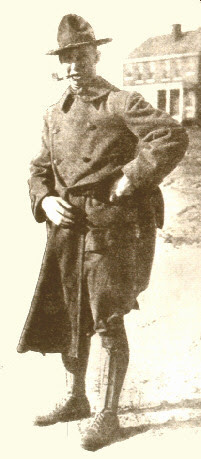 SITTING IN A TRAFFIC JAM ON PRESTON ROAD IN DALLAS, AND THOUGHT ABOUT MY FAMILY TREE AND MY GG GRANDFATHER’S BEING ON THE ROAD 152 YEARS EARLIER
SITTING IN A TRAFFIC JAM ON PRESTON ROAD IN DALLAS, AND THOUGHT ABOUT MY FAMILY TREE AND MY GG GRANDFATHER’S BEING ON THE ROAD 152 YEARS EARLIER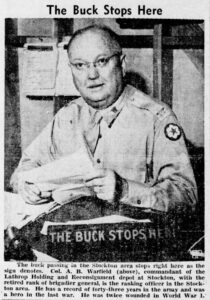
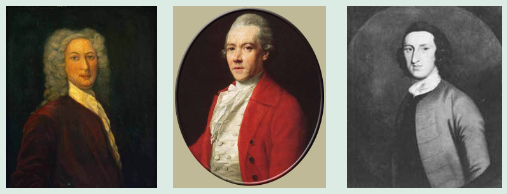 CONTINUING WITH THE FAMILY TREE OF THE SIGNERS OF THE DECLARATION OR THE CONSTITUTION
CONTINUING WITH THE FAMILY TREE OF THE SIGNERS OF THE DECLARATION OR THE CONSTITUTION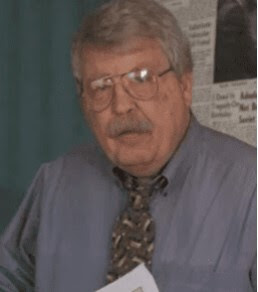 DANCESTORS HELPS A DAUGHTER HONOR HER FATHER’S FAMILY TREE WORK!
DANCESTORS HELPS A DAUGHTER HONOR HER FATHER’S FAMILY TREE WORK!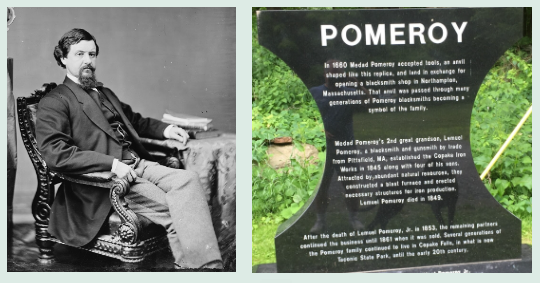 A DISTANT RELATIVE IN MY FAMILY TREE HAD THE SHORTEST TENURE AS THE SPEAKER OF THE HOUSE OF REPRESENTATIVES
A DISTANT RELATIVE IN MY FAMILY TREE HAD THE SHORTEST TENURE AS THE SPEAKER OF THE HOUSE OF REPRESENTATIVES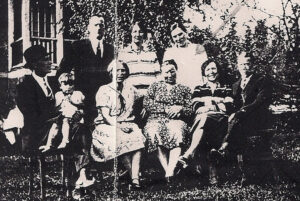 WHAT ABOUT YOUR FAMILY TREE?
WHAT ABOUT YOUR FAMILY TREE?